Scaling pharmacovigilance (PV) across Europe is as much an organizational challenge as it is a regulatory one. The operating model you choose - centralized, hybrid, or decentralized - determines how well you:
- balance global consistency with country-specific requirements,
- maintain a robust PV quality system,
- and stay compliant with Europe’s stringent case management and signal obligations.
Get the balance right, and lean teams can grow without tripping compliance alarms. In this blog post, we explore how to choose the right pharmacovigilance (PV) operating model for European growth, what factors to weigh, and practical tips to “scale smart.
Key Implications for Pharmacovigilance (PV) Systems in the EU
Under EMA’s Good Pharmacovigilance Practices (GVP), companies must maintain a documented PV system with:
- a functional quality system,
- clear roles (including an EU-QPPV),
- governed procedures, metrics, and records.
Your chosen model must uphold this system end-to-end - covering ICSR intake, literature monitoring, signal detection, assessment, and communication - while accommodating national nuances (e.g., local contacts, language workflows).
In practice, the org chart and the process map must co-evolve: as you add products and markets, your oversight mechanisms, documentation, and KPIs need to scale in lockstep.
Centralized, Decentralized, or Hybrid?
When it comes to structuring your PV operations, there is no one-size-fits-all model. Each approach offers distinct advantages - and trade-offs - that can significantly impact compliance, efficiency, and scalability.
|
Model |
Pros |
Cons |
|
Centralized |
|
|
|
Decentralized |
|
|
|
Hybrid |
|
|
At a glance
Centralized models
- Concentrate PV expertise and decision-making in one hub.
- Maximize consistency and simplify governance.
Decentralized models
- Place execution closer to country-specific requirements.
- Increase agility but require stronger coordination.
Hybrid models
- Keep core capabilities at HQ.
- Reserve targeted local capacity (e.g., for literature screening, translations, or authority interactions).
Which model is right for you?
The best-fit pharmacovigilance (PV) operating model depends on your organization’s size, portfolio, and growth ambitions. Smaller teams may benefit from the efficiency of centralization, while companies expanding into multiple EU markets often need the flexibility of a hybrid setup. The key is to design your structure around compliance “non-negotiables” and ensure your QPPV retains real oversight across the network.
Factors to Weigh When Choosing
When selecting your pharmacovigilance (PV) operating model, it’s not about ticking off a long checklist but about weighing a few critical levers that determine whether your system will scale smoothly—or buckle under complexity.
1. People & Roles
- Clear ownership across HQ, affiliates, and vendors is non-negotiable. Overlapping responsibilities create blind spots, while unclear accountability slows decision-making.
- The EU-QPPV must have full oversight and real visibility into the network. This means not just being “named” in the system but actively supported by governance structures, reporting lines, and tools that enable them to monitor performance across all parties.
- Think ahead: as you scale, consider whether you have the right mix of internal FTEs and external partners, and how you will maintain oversight if responsibilities shift.
2. Processes
- Build a standardized core framework for essentials such as ICSR intake, duplicate detection, EudraVigilance submissions, and follow-up. This core should be harmonized globally to ensure consistency and efficiency.
- Local variations should only exist where law or language requires them—for example, local literature monitoring, translations, or health authority interactions. Over-customization at the affiliate level is one of the fastest ways to lose oversight and create inspection findings.
- Regularly stress-test your processes with audits and mock inspections to confirm that they hold up under real-world regulatory scrutiny.
3. Signal Management & Governance
- Decide carefully where detection, triage, and assessment activities should sit: central teams often manage efficiency and data consistency better, but local teams may have valuable context.
- Escalation pathways must be crystal clear: how quickly do signals move from detection to decision-makers? Who makes the call on further assessment or regulatory reporting?
- Governance is not only about structures but also about rhythm—for example, regular safety review meetings, structured dashboards, and documented decisions that stand up to inspection.
4. Systems & Data
- Invest in centralized systems and databases that create a single source of truth across the organization. This ensures audit-ready traceability of all case handling, signals, and decisions.
- Data integration matters: fragmented tools for case intake, signal detection, and reporting can slow teams down and create gaps. Aim for interoperability or, ideally, one central architecture.
- Use dashboards and analytics to provide real-time oversight of compliance KPIs, inspection readiness, and safety trends—enabling both the QPPV and leadership to make data-driven decisions.
Companies that weigh these four levers carefully are far more likely to end up with a PV operating model that is compliant, scalable, and resilient under regulatory pressure.
Practical Tips to “Scale Smart”
Scaling pharmacovigilance isn’t about building the most elaborate setup; it’s about designing one that is lean, compliant, and inspection-ready from day one. Here are some practical ways to achieve that:
1. Design backwards from outcomes
- Start with the non-negotiables: compliance KPIs, inspection readiness, and cycle times.
- Work backwards to design your operating model around these expectations, rather than letting structure evolve ad hoc.
- This ensures the system remains focused on measurable outcomes instead of becoming a patchwork of processes.
2. Harmonize SOPs, localize only when required
- Keep your SOP backbone harmonized across the organization. This creates consistency and reduces the risk of affiliate-level deviations.
- Allow local variations only where national rules explicitly demand them (e.g., translations, local authority submissions, or language workflows).
- Over-localization is a common trap that adds unnecessary complexity without improving compliance.
3. Strengthen QPPV oversight
- Equip the QPPV with dashboards and real-time visibility over compliance, quality, and safety data.
- Oversight should extend beyond documentation; it must enable proactive intervention when trends suggest rising risk.
- Ensure QPPV reporting lines, governance bodies, and KPIs give them the authority to act effectively.
4. Structure literature monitoring & duplicate management
- Treat these as formal workflows rather than ad-hoc tasks handled inconsistently.
- Structured monitoring ensures you don’t miss critical safety information in local sources, and structured duplicate checks prevent inflated caseloads or misinformed signals.
- Where possible, leverage automation or external partners to increase efficiency and reduce human error.
5. Test your model before regulators do
- Conduct mock inspections and table-top exercises to stress-test your operating model in a safe environment.
- These simulations reveal weaknesses in roles, processes, and data flows before they are exposed to real-world regulatory scrutiny.
- Use lessons learned to refine procedures, improve training, and close gaps in your quality system.
By applying these principles, companies can scale smartly, building PV systems that grow with their business while staying lean, controlled, and compliant.
The Role of External Partners
As PV systems expand across Europe, even the best-designed internal setup can become stretched. External partners can play a crucial role in helping organizations scale smarter, without losing oversight.
1. Targeted capacity and niche expertise
- Vendors can provide specialized local knowledge, such as country-specific literature sources, language expertise, or direct interactions with national authorities.
- They also offer surge capacity during spikes in case volume (e.g., product launches, safety issues, or seasonal reporting peaks).
- Advanced providers may add value with signal analytics, automation, or AI-based screening tools that smaller internal teams may not have in-house.
2. Standardized workflows aligned with GVP
- The best external partners don’t just provide capacity; they bring structured, compliant workflows that integrate seamlessly with EMA’s Good Pharmacovigilance Practices.
- This reduces variability and helps ensure that external tasks are performed in a way that aligns with your internal processes and inspection expectations.
- Vendors with experience across multiple clients often bring best practices that can strengthen your own system.
3. Controlled extension of your PV system
- With the right quality agreements, SLAs, and KPIs, vendors become a controlled extension of your PV system, rather than a loosely connected outsourcing arm.
- Integration into your QMS and oversight mechanisms ensures accountability and audit-readiness.
- Done well, this enables lean internal teams to stay focused on strategy and oversight, while external partners handle execution.
The most effective operating models combine an internal backbone (for governance, oversight, and QPPV responsibilities) with external expertise (for local nuances, surge support, and advanced capabilities). This gives organizations the agility to grow quickly, while retaining the compliance and quality assurance regulators expect.
Ready to Go Deeper?
We’ll walk through real-world decision paths for SMEs and biotechs in our live session:
“Scaling Pharmacovigilance in Europe: A Practical Guide for Pharma SMEs and Biotechs.”
Register for our webinar to get practical examples, ready-to-use templates, and insights directly applicable to your PV setup. Need support? Contact QbD Group today.
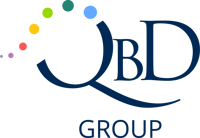

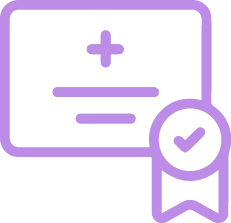
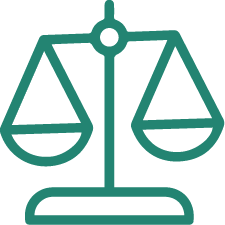
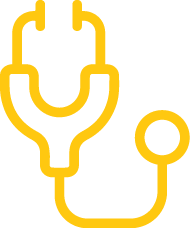
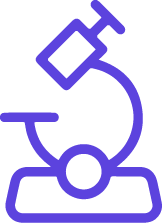
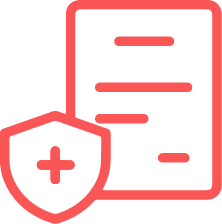









%2020251466.jpg)